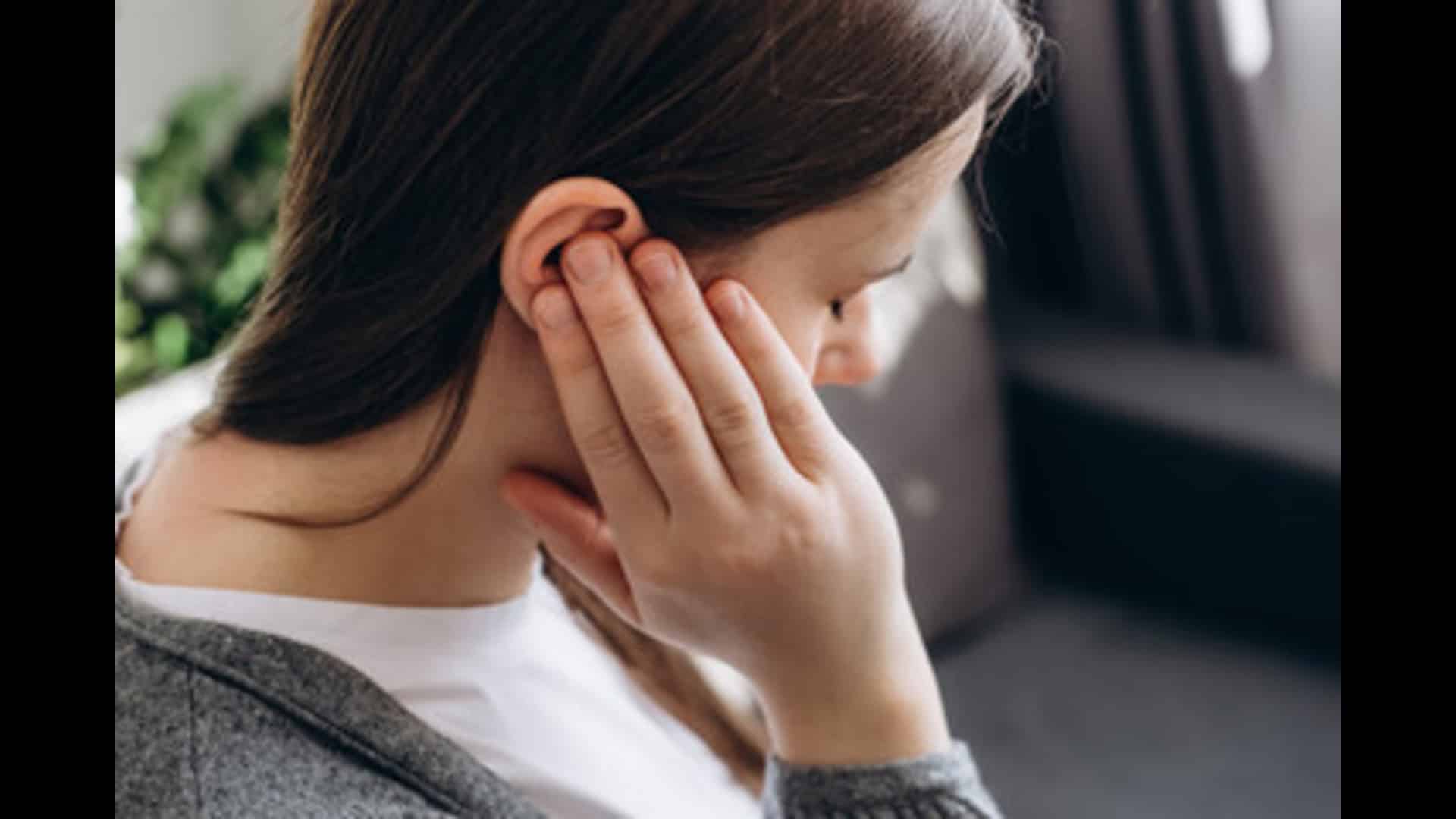Table of Contents
Pain Behind the Ear: Causes, Symptoms, and Treatment Options
If you’ve been experiencing pain behind your ear, you may be wondering what’s causing it and whether it requires medical attention. Pain behind the ear can stem from various conditions, ranging from mild ear infections to more serious issues like nerve damage or jaw problems. In this article, we’ll explore the most common causes of this discomfort, the symptoms to watch out for, and when to seek professional care.
Whether you’re feeling sharp pain, sore ear pain, or even swelling behind the ear, understanding the potential causes is crucial for getting the right treatment. If left untreated, some conditions, such as mastoiditis or occipital neuralgia, can lead to serious complications. This guide will help you identify the symptoms, understand the possible conditions, and provide advice on how to seek relief and care.
By the end of this article, you’ll have a clearer idea of what’s causing the pain behind your ear, and how to address it effectively, ensuring you can take the necessary steps to get back to feeling your best.
What is Pain Behind the Ear?
Pain behind the ear refers to any discomfort or ache that occurs in the area directly behind your ear, which includes the mastoid bone, the neck, and the base of your skull. This pain can be sharp, throbbing, or dull and is often linked to various underlying conditions. The area behind the ear is sensitive due to the many nerves, blood vessels, and muscles that surround it, making it vulnerable to pain from nearby structures.
While ear-related conditions like ear infections and earwax buildup are common causes, this discomfort can also be related to jaw or dental issues, nerve problems, or even tension in the neck. In some cases, it might be linked to more serious conditions like infections that spread to the mastoid bone (mastoiditis), or nerve disorders like occipital neuralgia.
The pain may be accompanied by other symptoms like swelling behind the ear, shooting pain near the ear, sore ear pain, or even dizziness or tinnitus (ringing in the ear). Understanding these symptoms can help you determine the severity and potential cause of the pain.
Common Causes of Pain Behind the Ear
Pain behind the ear can result from a variety of causes, some of which are relatively harmless and others that require medical attention. Below, we’ll explore the most common causes:
1. Ear Infections (Otitis Media & Otitis Externa)
- Otitis Media (middle ear infection): Caused by inflammation or infection of the middle ear, this condition is often triggered by a viral respiratory infection such as the common cold or flu. Symptoms include ear pain, fullness in the ear, fever, and sometimes discharge.
- Otitis Externa (swimmer’s ear): This infection occurs in the outer ear canal, often due to water exposure that traps moisture, fostering bacterial growth. Symptoms include itching, redness, clear or yellowish-green discharge, and a full sensation in the ear.
2. Earwax Buildup (Cerumen Impaction)
- Earwax (cerumen) is produced naturally to protect and clean the ear canal. However, when it becomes impacted due to overproduction or improper cleaning (such as using cotton swabs), it can lead to pain, hearing loss, tinnitus, and a feeling of fullness in the ear. This can also result in pain behind the ear, as the pressure from the buildup can cause discomfort.
3. Occipital Neuralgia
- Occipital neuralgia is caused by irritation or inflammation of the occipital nerves, which run from the neck up through the scalp. The pain is often described as sharp, shooting, or electric shock-like and may extend from the neck to behind the ear and the back of the head. This condition is sometimes triggered by neck injuries, poor posture, or muscle tension.
4. Temporomandibular Joint Disorder (TMJ)
- The TMJ connects your jaw to your skull, and when it becomes inflamed or misaligned, it can lead to pain near the ear. TMJ disorders are often associated with jaw pain, difficulty chewing, clicking sounds, and pain in the jaw and ear area. Stress, teeth grinding, and jaw injuries are common causes of TMJ.
5. Mastoiditis
- Mastoiditis is a serious infection of the mastoid bone, located directly behind the ear. It often results from untreated otitis media. Symptoms include fever, pain behind the ear, redness and swelling in the area, and temporary hearing loss. This condition can lead to complications like meningitis or abscess formation if left untreated, making it essential to seek immediate medical care.
6. Dental Issues
- Dental problems, such as cavities, abscesses, or impacted teeth, can sometimes cause referred pain to the ear. The pain might not originate in the ear but is often felt as pain behind the ear due to the nerves connecting the jaw and ear region.
Symptoms of Pain Behind the Ear
Recognizing the Symptoms of Pain Behind the Ear
The symptoms associated with pain behind the ear can vary based on the underlying condition. Common symptoms to look out for include:
- Shooting pain near ear: Often associated with nerve-related conditions like occipital neuralgia or TMJ.
- Sore ear pain: This can occur due to ear infections or impacted earwax.
- Swelling behind ear: Frequently seen with mastoiditis or otitis externa.
- Fullness in the ear: Can be caused by earwax buildup or ear infections.
- Tinnitus (ringing in the ears): Often accompanies ear infections or issues with the ear canal.
- Difficulty hearing: Associated with ear infections or impacted earwax.
The presence of these symptoms can help narrow down the cause of the pain and determine the appropriate course of treatment.
When to Seek Medical Help for Pain Behind the Ear
Should You See a Doctor? When to Seek Medical Help for Pain Behind the Ear
If the pain behind the ear is severe, persistent, or accompanied by additional symptoms, it is important to seek medical attention. You should see a doctor if:
- The pain lasts for more than a few days or worsens.
- You experience fever, pus or discharge from the ear.
- There is swelling, redness, or a lump behind the ear.
- You have neck stiffness or neurological symptoms like facial weakness, confusion, or dizziness.
- There is difficulty hearing or you notice other symptoms like tinnitus.
In many cases, seeking early treatment can help prevent complications, especially in conditions like mastoiditis or occipital neuralgia.
Diagnosis of Pain Behind the Ear
When you visit a healthcare provider for pain behind the ear, they will likely perform the following steps to diagnose the issue:
- Medical History: The doctor will ask questions about your symptoms, previous medical conditions, and any potential triggers (e.g., jaw clenching, recent dental issues, or ear infections).
- Physical Examination: The doctor will inspect your ear, jaw, neck, and head to check for swelling, tenderness, and signs of infection.
- Imaging Tests: In cases of suspected mastoiditis or other serious conditions, X-rays or CT scans may be recommended.
- Blood Tests: If an infection is suspected, blood tests can help identify the presence of inflammation or infection.
Treatment Options for Pain Behind the Ear
Treatment Options for Pain Behind the Ear: How to Relieve Your Symptoms
The treatment for pain behind the ear depends on the underlying cause. Common treatment options include:
1. Ear Infections:
- Antibiotics (oral or topical) for bacterial infections like otitis externa or mastoiditis.
- Pain relievers such as ibuprofen or acetaminophen to reduce pain and inflammation.
2. Earwax Buildup:
- Ear drops to soften the wax and clear the canal.
- Micro-suction or gentle irrigation to remove impacted earwax.
3. Occipital Neuralgia:
- Pain medications such as anti-inflammatories, muscle relaxants, or anticonvulsants.
- Nerve blocks or steroid injections for more severe cases.
4. TMJ Disorder:
- Pain relievers, muscle relaxants, and physical therapy for jaw exercises.
- Mouthguards or splints to prevent teeth grinding at night.
5. Mastoiditis:
- Intravenous antibiotics and possibly surgery (e.g., myringotomy or mastoidectomy) for severe cases.
6. Dental Issues:
- Dental treatments to address cavities, abscesses, or tooth decay.
- Antibiotics for infections like abscesses.
Preventing Pain Behind the Ear
How to Prevent Pain Behind the Ear: Tips for Maintaining Ear Health
To reduce the risk of developing pain behind the ear, consider the following tips:
- Avoid inserting objects into the ear canal, including cotton swabs, to prevent earwax impaction.
- Practice good dental hygiene to prevent tooth decay and abscesses that could cause referred pain.
- Manage TMJ issues by using mouthguards if necessary and avoiding excessive jaw movement.
- Seek regular checkups if you are prone to ear infections or earwax buildup.
Conclusion
Pain behind the ear can stem from a variety of conditions, ranging from mild ear infections to more serious problems like mastoiditis or occipital neuralgia. Early diagnosis and treatment are crucial to preventing complications. If you’re experiencing persistent or severe pain, it’s important to consult a healthcare professional for proper evaluation and care.
FAQs About Pain Behind the Ear
Common causes include ear infections, TMJ, mastoiditis, and earwax buildup. Seek medical attention if pain persists, is severe, or is accompanied by fever or discharge.
Yes, TMJ disorders can cause pain near the ear due to the connection between the jaw and the ear.
Mastoiditis is an infection of the bone behind the ear, often caused by untreated ear infections. It requires antibiotics and sometimes surgery.
Over-the-counter pain relievers, heat packs, and gentle massages on the neck and jaw area can help ease the discomfort.
At The Hearing Centre, we provide hearing solutions for all ages. Hearing is essential for everyone, regardless of age, and we offer a wide range of hearing aids to meet the needs of both children and adults. Our commitment to quality and innovation ensures that we deliver advanced, stylish options for every lifestyle.
Yes, impacted earwax can cause pain and discomfort in the ear and the surrounding area.
While most causes are not serious, pain from conditions like mastoiditis or occipital neuralgia requires prompt treatment to avoid complications.
Pain duration depends on the cause. For infections or earwax buildup, pain may subside with treatment in a few days, but nerve-related pain like occipital neuralgia may last longer.
Stress can exacerbate TMJ disorders, which can lead to pain behind the ear.
Yes, dental issues like abscesses or cavities can cause referred pain to the ear.
In severe cases of mastoiditis, surgery may be required to drain the infection or remove the affected bone.

Evlin is passionate about helping people with hearing loss. With years of experience in audiology, she has diagnosed and treated a wide range of hearing conditions across all age groups. She is accredited to conduct comprehensive hearing assessments and provide treatments for patients from newborns to the elderly. Committed to personalized care, she strives to empower patients to fully engage in life with better hearing.
Designation: Clinical Audiologist
Qualification: Bachelor of Health Science (Honours) (Audiology), University of Science Malaysia
Membership: .Society of Audiology Professionals in Singapore (SAPS)

